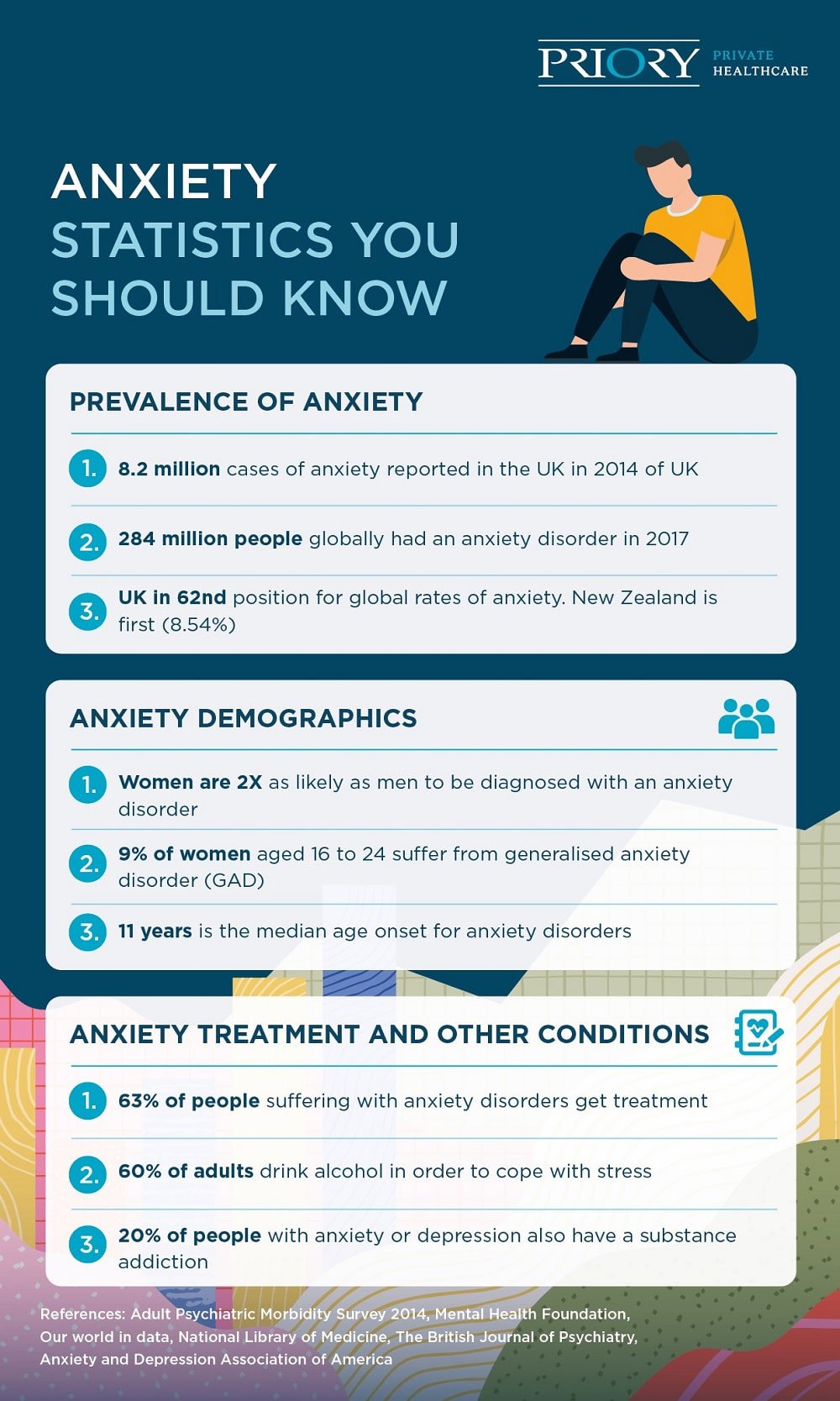Anxiety statistics
Explore the impact and prevalence of anxiety disorders: insights from UK mental health statistics and research.
Anxiety is a feeling of fear, worry or general unease that we all get from time to time, be it when we go for a job interview or go for our first day at school. If these feelings persist, or are so extreme that they considerably affect normal life, you could have an anxiety disorder, just like the 6% highlighted in these UK mental health statistics.
Part of understanding anxiety is educating ourselves on data and research on the topic. To help you gain that understanding of how common anxiety is, we’ve listed some relevant facts and figures from leading organisations in mental health, academia and public health.
